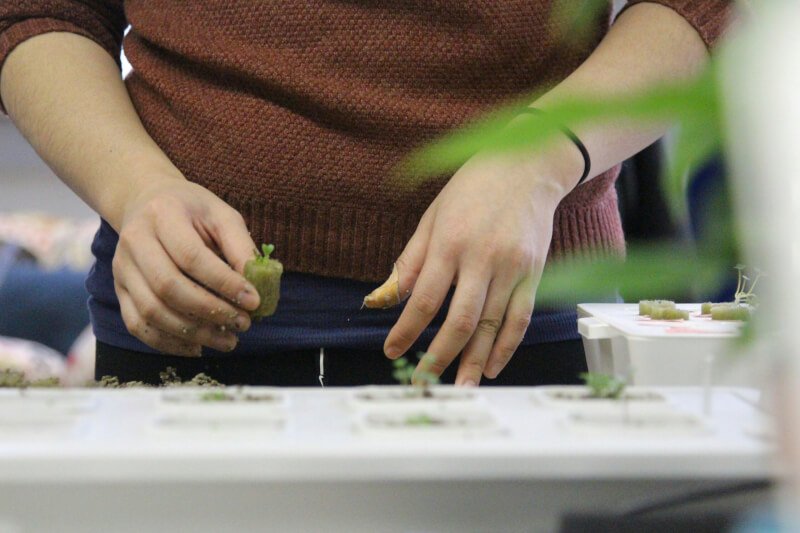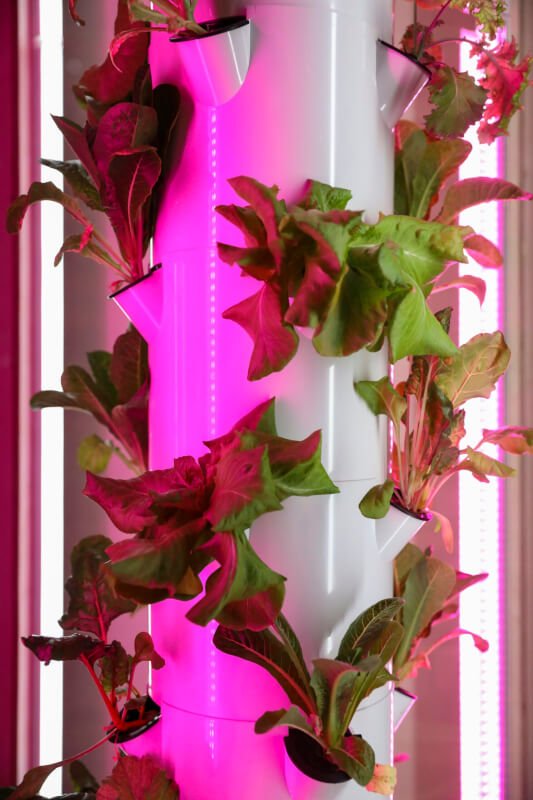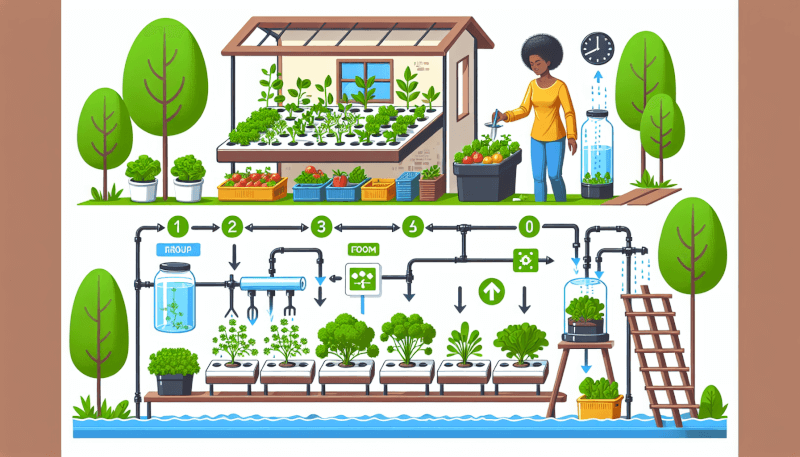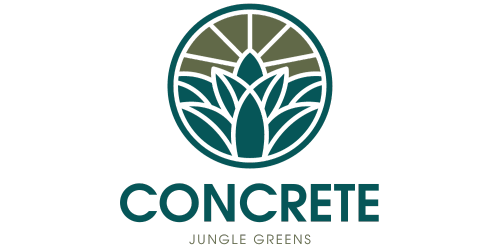Imagine having your own flourishing garden right in your own home, where you can grow your own fresh and organic ingredients for all your culinary creations. With hydroponic gardening, you can do just that! In this article, we will show you the step-by-step process of creating your own hydroponic garden, so you can experience the joy and satisfaction of growing your own ingredients. From choosing the right system to selecting the perfect plants, we will guide you through the entire journey of creating a hydroponic garden that will provide you with an endless supply of flavorful and nutritious produce. Get ready to embark on this exciting adventure and become a master hydroponic gardener!

Choosing the Right Hydroponic System
When it comes to setting up your hydroponic garden, one of the most important decisions you’ll need to make is choosing the right hydroponic system. There are several factors to consider when making this decision, including the space available, the types of plants you want to grow, and your budget. By taking the time to carefully evaluate your options, you can find a hydroponic system that meets your needs and helps you grow healthy, thriving plants.
Determining the Space Available
Before you start shopping for a hydroponic system, it’s important to determine the amount of space you have available for your garden. Hydroponic systems come in a variety of sizes, from small countertop units to larger, more elaborate setups. Consider factors such as the size of the room or area where you plan to set up your garden, as well as any height restrictions or limitations. By knowing the space available, you can ensure that the hydroponic system you choose fits comfortably and works efficiently in your environment.
Understanding Different Types of Hydroponic Systems
There are several different types of hydroponic systems available, each with its own advantages and disadvantages. Some common types include deep water culture, nutrient film technique, ebb and flow, and aeroponics. Deep water culture systems involve suspending the plant roots in a nutrient-rich solution, while nutrient film technique systems use a thin film of nutrient solution flowing over the roots. Ebb and flow systems periodically flood the grow tray with a nutrient solution, and aeroponic systems mist the roots with a nutrient solution. Each system has its own unique set-up requirements and maintenance needs, so it’s important to research and understand the different types before making your decision.
Considering Factors like Cost, Complexity, and Maintenance
When choosing a hydroponic system, it’s important to consider factors such as cost, complexity, and maintenance requirements. Some systems may be more expensive upfront but require less maintenance over time, while others may be more affordable but require regular monitoring and adjustments. Think about your budget and the amount of time and effort you’re willing to put into maintaining your hydroponic garden. It’s also helpful to consider your level of experience with hydroponics, as some systems may be more beginner-friendly than others. By taking these factors into account, you can choose a hydroponic system that aligns with your budget and lifestyle.
Setting Up the Hydroponic System
Now that you’ve chosen the right hydroponic system for your garden, it’s time to set it up. Proper installation is crucial for creating an optimal growing environment for your plants.
Creating a Suitable Growing Environment
Before installing your hydroponic system, it’s important to create a suitable growing environment for your plants. This includes ensuring adequate lighting, controlling the temperature and humidity levels, and providing proper ventilation. Choose a well-ventilated area with access to electrical outlets for your grow lights and fans. Set up reflective materials, such as Mylar or white paint, to maximize the amount of light reaching your plants. It’s also important to clean the space thoroughly to minimize the risk of pests and diseases. By creating a suitable growing environment, you can give your plants the best chance to thrive.
Installing the Water Reservoir and Pump
The water reservoir and pump are essential components of your hydroponic system. The water reservoir holds the nutrient solution that will feed your plants, while the pump ensures that the solution is circulated properly. Follow the manufacturer’s instructions to install the water reservoir and connect the pump. It’s important to choose a reservoir and pump size that aligns with the needs of your hydroponic system. Make sure the reservoir has a lid to prevent light from reaching the solution, as light can promote algae growth. By properly installing the water reservoir and pump, you can ensure a continuous supply of nutrient-rich solution for your plants.
Assembling the Grow Trays or Channels
Next, you’ll need to assemble the grow trays or channels where your plants will be placed. The type of hydroponic system you chose will determine the specific setup required. Some systems use individual grow trays or pots, while others use channels or pipes. Follow the manufacturer’s instructions to properly assemble the grow trays or channels. Pay attention to the spacing between the plants, as overcrowding can lead to poor air circulation and increased risk of disease. It’s also important to ensure that the trays or channels are level to prevent uneven distribution of the nutrient solution. By assembling the grow trays or channels correctly, you can create an efficient and effective growing system for your plants.

Selecting the Appropriate Growing Medium
The growing medium is an important component of your hydroponic system, as it provides support for the plants and helps hold the nutrients in place. There are several different types of growing mediums to choose from, and the right one for your garden will depend on factors such as the type of plants you’re growing and the specific requirements of your hydroponic system.
Understanding Different Types of Growing Mediums
Some common types of growing mediums used in hydroponics include perlite, vermiculite, coconut coir, rockwool, and clay pellets. Each type has its own unique characteristics and benefits. For example, perlite is lightweight and provides excellent drainage, while rockwool retains moisture well and provides good insulation. Coconut coir is a sustainable option that retains moisture and provides good aeration. Take the time to research and understand the different types of growing mediums to determine which one is best suited for your plants and system.
Choosing One Based on Plant Requirements and System Type
When selecting a growing medium, it’s important to consider the specific requirements of your plants and the type of hydroponic system you’re using. Some plants prefer a moist growing environment, while others thrive in a drier medium. Certain systems, such as deep water culture, may require a lightweight medium that allows the plant roots to easily access the nutrient solution. Consider factors such as water retention, aeration, and the pH level of the medium when making your decision. By choosing a growing medium that aligns with the needs of your plants and system, you can provide optimal conditions for growth.
Preparing the Growing Medium Before Use
Before placing your plants in the growing medium, it’s important to properly prepare it to ensure it’s clean and free from contaminants. Depending on the type of growing medium you’ve chosen, the preparation process may vary. For example, rockwool should be soaked in water with a slightly acidic pH, while coconut coir may need to be washed and rinsed to remove any excess salts. Follow the manufacturer’s instructions or consult reliable sources for specific guidelines on preparing your chosen growing medium. By taking the time to properly prepare the growing medium, you can minimize the risk of introducing pests, diseases, or nutrient imbalances to your hydroponic system.
Choosing the Right Nutrients
In hydroponics, the nutrient solution is a vital component that provides the essential elements your plants need for healthy growth. It’s important to choose the right nutrients and ensure they are properly balanced to meet the specific needs of your plants.
Understanding the Role of Nutrients in Hydroponics
Nutrients play a crucial role in hydroponics by providing the necessary elements for plant growth. The primary macronutrients required by plants are nitrogen (N), phosphorus (P), and potassium (K), also known as NPK. In addition to these macronutrients, plants also require secondary macronutrients, such as calcium (Ca), magnesium (Mg), and sulfur (S), as well as various micronutrients. The nutrient solution is typically mixed with water and supplied directly to the roots of the plants, allowing for efficient uptake and utilization.
Researching and Selecting the Necessary Nutrients
Before choosing your nutrients, it’s important to research the specific nutritional requirements of the plants you’re growing. Different plants have different nutrient needs, so it’s essential to understand the specific ratios and levels required for optimal growth. Consider factors such as the stage of plant growth (vegetative or flowering), the pH level of the nutrient solution, and any specific requirements for the type of hydroponic system you’re using. Many hydroponic nutrient solutions are available commercially and come in pre-packaged formulations for specific types of plants or growth stages. By researching and selecting the necessary nutrients, you can provide your plants with the essential elements they need to thrive.
Balancing the Nutrient Solution
Once you have chosen your nutrients, it’s important to properly balance the nutrient solution to ensure that all the required elements are present in the correct ratios. Maintaining the right balance of nutrients is crucial for preventing nutrient deficiencies or toxicities, which can negatively impact plant growth and health. Use a reliable pH and EC meter to measure the pH level and electrical conductivity (EC) of the nutrient solution. The pH level should be within the optimal range for your plants, typically between 5.5 and 6.5. The EC level indicates the concentration of nutrients in the solution and should be adjusted according to the needs of your plants and the specific growth stage. By regularly monitoring and adjusting the nutrient solution, you can ensure that your plants are receiving the proper nourishment they need for optimal growth.

Maintaining proper pH and EC Levels
Maintaining the proper pH and EC levels in your hydroponic system is essential for plant health and nutrient uptake. pH levels affect nutrient availability, while EC levels indicate the concentration of nutrients in the solution. By understanding the importance of pH and EC levels and taking steps to regulate them, you can create an optimal growing environment for your plants.
Understanding pH and EC in Hydroponics
pH is a measure of the acidity or alkalinity of a solution and affects nutrient availability to plants. In hydroponics, it’s important to maintain the pH level within the optimal range for your plants. Most plants thrive in a slightly acidic pH range of 5.5 to 6.5. Deviations from this range can result in nutrient deficiencies or toxicities, as certain nutrients may become less available or more prone to locking out. EC, on the other hand, measures the electrical conductivity of the nutrient solution and indicates the concentration of nutrients. Different plants have different EC requirements, and the levels will also vary depending on the growth stage. Understanding and monitoring pH and EC levels is crucial for ensuring that your plants are receiving the correct balance of nutrients.
Monitoring and Adjusting pH Levels
To maintain the optimal pH levels in your hydroponic system, it’s important to regularly monitor and adjust the pH of the nutrient solution. Start by using a reliable pH meter to measure the current pH level of the solution. If the pH level is outside the desired range, you will need to adjust it accordingly. To raise the pH, you can add pH Up solution or other alkaline compounds. To lower the pH, you can add pH Down solution or other acidic compounds. It’s important to make small adjustments at a time and allow the solution to stabilize before retesting. Regular monitoring and adjustment of pH levels will help ensure that your plants can efficiently absorb the nutrients they need for healthy growth.
Measuring and Adjusting EC Levels
Measuring and adjusting the EC levels is essential for ensuring that your plants are receiving the correct concentration of nutrients. Start by using an EC meter to measure the electrical conductivity of the nutrient solution. This measurement will give you an idea of the concentration of nutrients present in the solution. Compare the measured EC level with the recommended range for your specific plants and growth stage. If the EC level is too high, it’s an indication of an excessive nutrient concentration, and you may need to dilute the solution with water. If the EC level is too low, it’s a sign that you need to increase the nutrient concentration by adding more nutrients to the solution. Regular monitoring and adjustment of EC levels will help ensure that your plants are receiving the optimal nutrition for healthy growth.
Providing Adequate Lighting
Light plays a crucial role in the growth and development of plants. In a hydroponic garden, it’s important to provide adequate lighting to ensure that your plants can photosynthesize effectively and grow strong and healthy.
Determining the Lighting Requirements of Your Plants
Different plants have different lighting requirements, so it’s important to determine the specific needs of the plants you’re growing. Factors such as the species of the plant, its growth stage, and the desired yield will influence the lighting requirements. Some plants, such as leafy greens, require lower light intensity and can thrive under fluorescent or LED lights. Other plants, such as fruiting and flowering plants, require higher light intensity and may benefit from high-intensity discharge (HID) lights like metal halide (MH) or high-pressure sodium (HPS) lights. Research the specific lighting needs of your plants to ensure that you’re providing the right amount and quality of light for optimal growth.
Choosing the Right Type of Grow Lights
Once you understand the lighting requirements of your plants, it’s time to choose the right type of grow lights. There are several options to consider, including fluorescent, LED, MH, and HPS lights. Each type has its own advantages and disadvantages. Fluorescent lights are energy-efficient and provide a good spectrum for vegetative growth. LED lights are also energy-efficient and can be customized to provide specific light spectrums for different growth stages. MH lights emit a blue spectrum that is ideal for vegetative growth, while HPS lights emit a red spectrum that is beneficial for flowering and fruiting plants. Consider factors such as energy efficiency, light output, lifespan, and cost when choosing your grow lights.
Calculating the Correct Light Intensity and Photoperiod
To ensure optimal plant growth, it’s important to provide the correct light intensity and photoperiod. Light intensity refers to the amount of light reaching the plants, while photoperiod refers to the duration of light exposure. The light intensity requirements vary depending on the type of plant and growth stage. Leafy greens and seedlings, for example, require lower light intensities of around 100-400 micromoles per square meter per second (μmol/m²/s), while fruiting and flowering plants may require higher intensities of 600-1000 μmol/m²/s. The photoperiod also varies depending on the stage of plant growth. Most plants require 14-16 hours of light per day during the vegetative stage and 12 hours of light per day during the flowering stage. By calculating and providing the correct light intensity and photoperiod, you can promote healthy growth and maximize your plant’s potential.

Regulating Temperature and Humidity
Temperature and humidity are critical factors to consider when creating an optimal growing environment for your hydroponic garden. By regulating these factors, you can ensure that your plants grow and thrive in an environment that mimics their natural habitat.
Understanding the Impact of Temperature and Humidity on Plant Growth
Temperature and humidity directly influence plant growth and development. Different plants have different temperature and humidity requirements, so it’s important to understand the specific needs of the plants you’re growing. Temperature affects plant metabolism, nutrient uptake, and overall plant health. Most plants thrive in temperatures between 65°F and 75°F (18°C to 24°C), but some plants may have specific temperature preferences. Humidity, on the other hand, affects transpiration and the plant’s ability to take up water and nutrients through its roots. While some plants prefer higher humidity levels, others may thrive in drier conditions. By providing the right temperature and humidity levels, you can create an environment that is conducive to healthy plant growth.
Controlling the Temperature Inside the Growing Area
To control the temperature inside your hydroponic growing area, it’s important to consider factors such as ventilation, insulation, and cooling options. Proper ventilation is crucial for maintaining the right temperature and ensuring a constant supply of fresh air to the plants. Consider installing exhaust fans and intake vents to promote airflow. Insulating the walls, floor, and ceiling of your growing area can help stabilize temperatures and reduce energy consumption. During hot summer months, it may be necessary to add a cooling system, such as air conditioning or evaporative cooling, to maintain optimal temperatures. Similarly, during cold winter months, adding a heater or insulating the area can prevent temperature drops. Regularly monitoring the temperature inside the growing area and making adjustments as necessary will help ensure that your plants are growing in an environment that promotes healthy development.
Maintaining Optimal Humidity Levels
Maintaining the proper humidity levels in your hydroponic garden is crucial for healthy plant growth. High humidity can increase the risk of fungal diseases, while low humidity can lead to excessive transpiration and water stress. The ideal humidity level will depend on the specific plants you’re growing. Leafy greens and herbs generally prefer higher humidity levels of around 50% to 60%, while fruiting and flowering plants may require lower humidity levels of around 40% to 50%. To maintain optimal humidity levels, consider using a humidifier or dehumidifier, depending on the needs of your plants. Monitoring the humidity levels and adjusting as necessary will help create an environment that supports healthy growth and development.
Managing Pest and Disease Control
Managing pest and disease control is an essential part of maintaining a healthy hydroponic garden. By implementing preventive measures and promptly addressing any issues, you can minimize the risk of infestations and diseases that can harm your plants.
Implementing Preventive Measures
Prevention is key when it comes to managing pests and diseases in your hydroponic garden. Start by maintaining proper hygiene and cleanliness in your growing area. Clean and disinfect all equipment, grow trays, and tools before use. Regularly inspect your plants for signs of pests or diseases, such as yellowing leaves, wilting, or unusual growth. Introduce beneficial insects, such as ladybugs or predatory mites, to combat common pests. Avoid overcrowding your plants and provide adequate spacing to promote good air circulation and prevent the spread of diseases. By implementing these preventive measures, you can reduce the risk of pests and diseases taking hold in your hydroponic garden.
Identifying and Treating Common Hydroponic Pests and Diseases
Despite your best efforts, pests and diseases can still find their way into your hydroponic garden. It’s important to be able to identify common pests and diseases and take swift action to treat them. Some common hydroponic pests include aphids, whiteflies, thrips, and spider mites. Diseases such as powdery mildew, root rot, and fusarium wilt can also pose a threat to your plants. When dealing with pests, consider using organic and non-toxic methods, such as neem oil or insecticidal soap. For diseases, proper sanitation and hygiene practices, as well as specific fungicides or treatment measures, may be necessary. Regular monitoring and prompt action will help minimize the damage caused by pests and diseases, allowing your plants to thrive.
Using Organic and Non-toxic Methods for Control
In a hydroponic garden, it’s important to use organic and non-toxic methods for pest and disease control. Since hydroponic plants are grown without soil, they are more susceptible to chemical residues from synthetic pesticides. Organic methods, such as biological control using beneficial insects, natural pest repellents, and cultural practices, are safer alternatives that ensure the health and safety of your plants and the environment. Implementing proper sanitation and hygiene practices, such as regularly cleaning and disinfecting your equipment, will also help prevent the spread of pests and diseases. By using organic and non-toxic methods for pest and disease control, you can maintain a healthy and sustainable hydroponic garden.

Regular Maintenance and Harvesting
Regular maintenance and harvesting are crucial to ensure the ongoing success of your hydroponic garden. By following basic maintenance tasks and harvesting at the right time, you can promote healthy plant growth and maximize your yield.
Checking and Adjusting the Nutrient Solution Regularly
Regularly checking and adjusting the nutrient solution is an important maintenance task in hydroponics. Nutrient levels can fluctuate over time due to plant uptake, evaporation, and other factors. Make it a habit to regularly measure and adjust the pH and EC levels of the nutrient solution. This will help ensure that your plants are receiving the right balance of nutrients. Depending on the needs of your plants, you may also need to periodically change or top up the nutrient solution. By regularly monitoring and adjusting the nutrient solution, you can prevent nutrient imbalances or deficiencies and promote healthy plant growth.
Pruning and Trimming Plants
Pruning and trimming your plants are important tasks that should be done regularly to maintain their health and shape. Pruning involves removing dead, damaged, or diseased leaves or stems, while trimming is the process of removing excessive growth or unwanted parts of the plant. Regular pruning and trimming help improve air circulation and reduce the risk of diseases, pests, and overcrowding. They also help redirect the plant’s energy towards productive growth and encourage the development of stronger branches and more flowers or fruits. Use clean and sharp pruning shears or scissors to minimize damage to the plants. By pruning and trimming your plants regularly, you can ensure that they remain healthy and productive.
Harvesting the Yield at the Right Time
Harvesting your hydroponic yield at the right time is crucial for maintaining optimal flavor, texture, and nutrient content. The exact timing will depend on the type of plant and the specific part you’re harvesting (leaves, fruits, or roots). Harvesting too early may result in immature or underdeveloped produce, while harvesting too late can lead to overripe or tough produce. Generally, leafy greens can be harvested as soon as they reach the desired size, while fruiting and flowering plants should be harvested when the fruits or flowers are fully mature. Use clean and sharp tools to minimize damage to the plants and handle the harvested produce with care. By harvesting your yield at the right time, you can enjoy the freshest and most flavorful ingredients from your hydroponic garden.
Troubleshooting Common Issues
While hydroponics offers many benefits, it’s not without its challenges. It’s important to be aware of common issues that may arise and know how to troubleshoot them effectively. By identifying and resolving issues promptly, you can ensure the continued success of your hydroponic garden.
Identifying and Resolving Nutrient Imbalances
One common issue in hydroponics is nutrient imbalances, which can occur when the ratios or concentrations of nutrients in the solution are not at the optimal levels for your plants. Nutrient imbalances can lead to nutrient deficiencies or toxicities, resulting in stunted growth, yellowing leaves, or other symptoms. Regularly monitoring the pH and EC levels of the nutrient solution will help you identify and resolve nutrient imbalances. If you notice symptoms of nutrient deficiency or toxicity, adjust the pH and EC levels accordingly. You may need to supplement with additional nutrients or flush the system with fresh water to correct the imbalances. By being vigilant and proactive in addressing nutrient imbalances, you can ensure that your plants are receiving the proper nutrition they need for healthy growth.
Addressing pH and EC Fluctuations
Fluctuations in pH and EC levels can occur in a hydroponic system for various reasons, including changes in plant uptake, evaporation, or the addition of new nutrient solution. It’s important to regularly monitor these levels and make adjustments as needed. If you notice significant fluctuations in pH or EC, consider factors such as changes in water quality, nutrient solution strength, or the effectiveness of your pH adjustment methods. Fluctuations in pH can affect nutrient availability and plant health, so it’s important to maintain a stable pH level within the optimal range for your plants. Likewise, fluctuating EC levels can lead to imbalances and adversely affect plant growth. By regularly monitoring and addressing pH and EC fluctuations, you can maintain a stable growing environment for your plants.
Dealing with Plant Deficiencies or Toxicity
Plant deficiencies or toxicity can occur when the nutrient solution is not properly balanced or when plants are unable to absorb nutrients due to pH or EC issues. Common symptoms of nutrient deficiencies include yellowing or discolored leaves, stunted growth, and leaf curling. If you notice these symptoms, it’s important to identify the specific nutrient that is lacking or in excess and take appropriate measures to address the issue. This may involve adjusting the pH and EC levels, supplementing with specific nutrients, or flushing the system with fresh water. Regular monitoring and addressing of plant deficiencies or toxicity will help ensure that your plants are receiving the necessary nutrients for healthy growth and development.
Creating a hydroponic garden for growing your own ingredients can be a rewarding and enjoyable experience. By choosing the right hydroponic system, setting up a suitable growing environment, selecting the appropriate growing medium, providing the right nutrients, maintaining proper pH and EC levels, providing adequate lighting, regulating temperature and humidity, managing pest and disease control, performing regular maintenance, and troubleshooting common issues, you can optimize your hydroponic garden for success. With care and attention, you can grow healthy, thriving plants and have a bountiful harvest of fresh and nutritious ingredients right at your fingertips. So, get started and embark on your hydroponic journey today!


